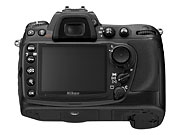Manchester swaps traditional employee access cards for an iris recognition system.
Manchester has implemented what it claims is the U.K.'s first biometric access control system based on iris recognition. The system officially went live just before Christmas, and is used to control access to secure parts of the airport for airport workers.
Manchester Airport and the Department for Transport (DfT) partnered with Human Recognition Systems (HRS), a Liverpool-based identity management consultancy, to implement the system.
Currently, most U.K. airports used conventional access control cards to regulate movement of people from landside to airside within the airports. In order to enforce adequate security levels, security officers often have to man the entrance to each entry point, carrying out a variety of time consuming and costly security checks.
The biometric access control system at Manchester Airport augments its manual checking procedures. It uses iris recognition cameras to allow staff access into restricted zones.
"We have been working with Manchester airport now for the past five years," said Neil Norman, CEO at Human Recognition Systems, speaking to Techworld. "We trialled various biometric systems, including fingerprints, iris recognition, and hand geometry recognition. In the end, iris and hand geometry recognition were the two finalists, but it was felt that iris recognition was the best fit."
"With traditional access cards you are unable to monitor behavior of every single member of staff," he added. "People can share their identity, either via collusion or collaboration."
He pointed out that airports have to contend with a large workforce, 25,000 in the case of Manchester. This includes not just airport staff, but staff for the airline food companies, engineers, people to service fuel bowsers etc.
"This is not retinal scanning," said Norman. "We are looking to capture the colored doughnut around your pupil, i.e. the colored bit in your eye. An iris camera focuses on the eye and simply takes a picture of the doughnut to get a pattern."
"An algorithm extracts the iris pattern and stretches it out into something like a barcode, with is then compared against our database. There are also systems in place to make sure it is a real living eye in the picture, and not just a photograph of an eye."
"We get a sub second response time with this iris recognition system," said Norman. "It is faster than taking out an access card, swiping it, and then going through."
He dismisses as absolutely nonsense the urban legend that alcohol and blood shot eyes could affect an iris recognition system. Neither are glasses a problem, although sunglasses could be, as the camera needs to actually see the iris.
With the U.K. government stepping up its commitment to its controversial e-Borders program, iris recognition is being touted as the key biometric system for the government to track passenger movements.
Heathrow Airport has already piloted the technology last year with its miSense project, which saw more than 60,000 passengers processed by the Iris Recognition Immigration System - or IRIS. They had their iris pattern and passport details stored in a database to enable them to pass through border controls electronically without a face-to-face encounter with an official.
http://www.pcworld.com/article/id,141697-c,biometricsecuritydevices/article.html




